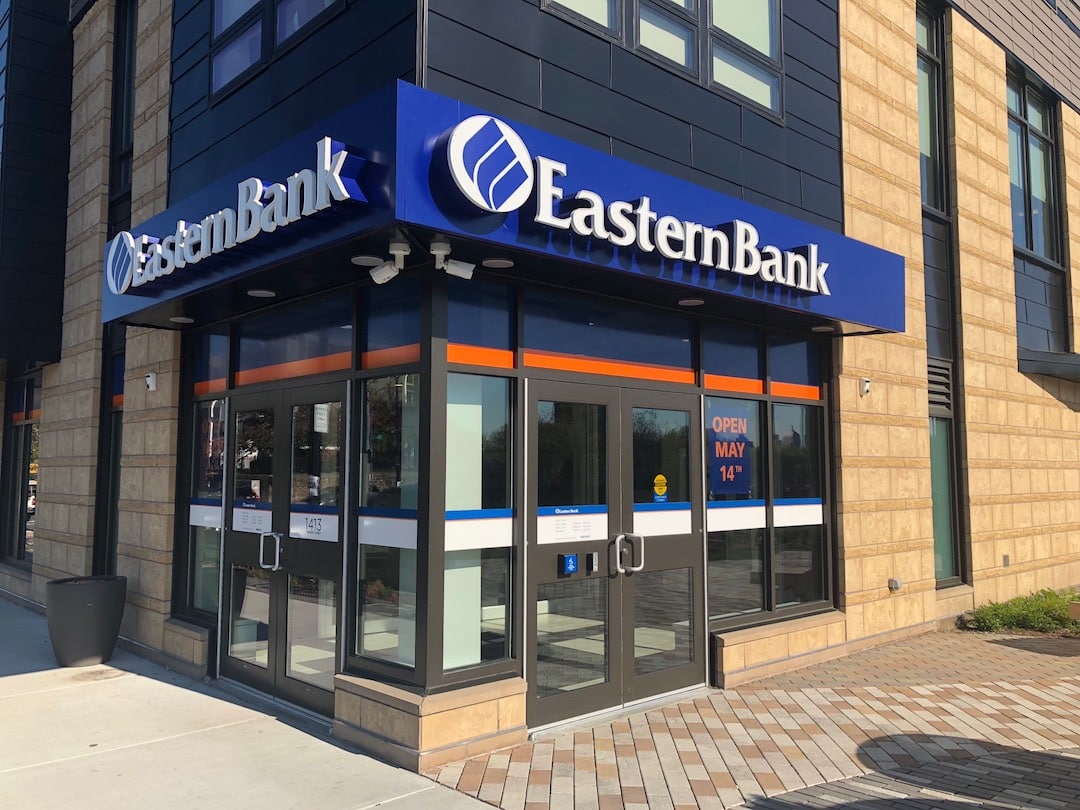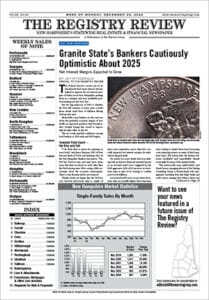After finishing up its first quarter as a public bank, Eastern Bank in the year ahead plans to reduce expenses as it looks to make larger bank acquisitions than it had in the past.
“Armed with $1.7 billion from our capital raise, we believe that we are positioned better than ever before to undertake bank acquisition opportunities in our region, supplementing our solid organic growth,” Eastern Bank Chair and CEO Bob Rivers said on Jan. 29 during the bank’s first conference call to discuss quarterly earnings since the bank went public on October 14.
Eastern Bank saw a net loss in the fourth quarter because of its contribution to the Eastern Bank Charitable Foundation, a donation planned as part of its conversion from a mutual bank.
The one-time donation to the Eastern Bank Charitable Foundation of 7.5 million shares of common stock was valued at $91.3 million. The bank said in its earnings statement that the contribution resulted in a net loss of $44.1 million for the fourth quarter of 2020, or $0.26 per share, compared to net income of $28.5 million in the third quarter.
Eastern’s operating net income was $31.6 million in the fourth quarter, or $0.18 per share, compared to $32.3 million in the third quarter, the bank said in the statement.
During the conference call, Rivers said Eastern Bank was positioned to grow faster than in the past, giving the bank additional bandwidth and resources to better serve customers, compete against larger banks and grow its market share.
Rivers said Eastern would still pursue bank acquisitions with the capital raised in the public offering. In response to an analyst’s question about plans for M&A, Rivers said the bank would look for opportunities in its current or adjacent market. Eastern has bank branches in Eastern Massachusetts and New Hampshire.
Eastern’s past acquisitions have been for banks of about $1 billion in assets, Rivers said, and the bank will be looking for larger acquisitions in the future.
Rivers is not considering a merger of equals and cited a lack of opportunities in the market. Eastern’s chief financial officer and chief administrative officer, Jim Fitzgerald, added that the bank was subject to a three-year restriction on selling itself following the initial public offering, eliminating a merger of equals as an option.
Eastern does not anticipate any immediate M&A opportunities in the current market, Rivers said, but has “made it known generally” that the bank is interested in potential opportunities.
Eastern Bank will continue acquiring insurance agencies after completing two acquisitions in that division in 2020, Rivers said, adding that the bank has a pipeline of potential deals in that space.
Reducing expenses will be a key initiative for Eastern as a public bank. The bank’s non-interest expenses were between $100 million and $102 million in the third and fourth quarters, and Fitzgerald said the bank expects to reduce expenses by 2 to 3 percent annualized.
One cost savings measure involves a change underway to the bank’s pension plan. Fitzgerald said this was the type of change the bank would be looking to make.
In response to an analyst’s question, Rivers said that while the bank had done past branch consolidations, he did not anticipate a major restructuring of the branch network. He added that how the bank looks at branch efficiency would evolve, including in light of the accelerated adoption of online banking.


